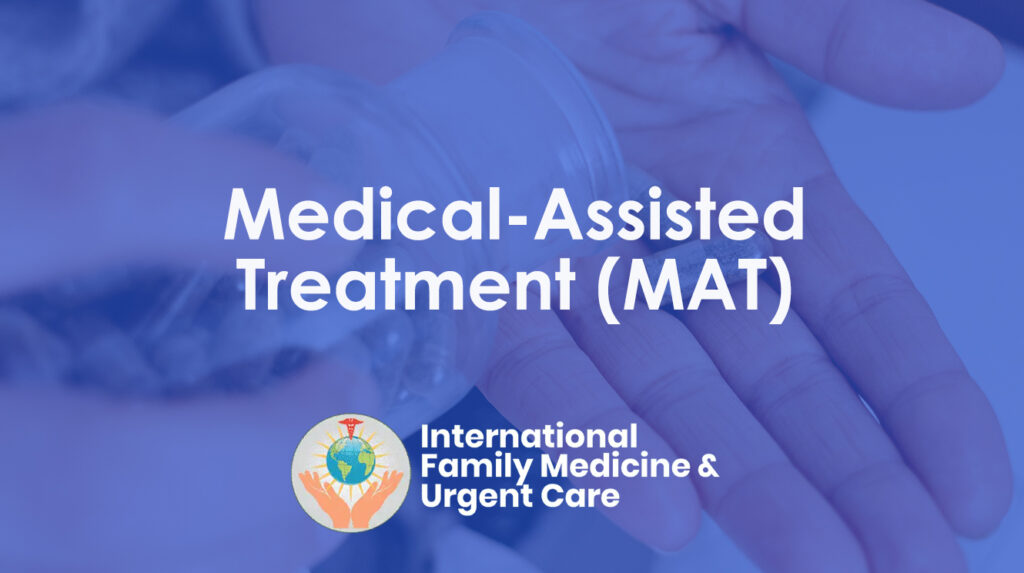Overview
There is one death caused by an overdose of opioids every 20 minutes. Medication-assisted treatment (MAT)—a combination of psychosocial therapy and U.S. Food and Drug Administration-approved medication—is the most effective intervention to treat opioid use disorder (OUD) and is more effective than either behavioral interventions or medication alone. The use of MAT reduces illicit opioid use significantly compared to non-drug approaches, and increased access can reduce overdose deaths. Due to inadequate funding for treatment programs and a shortage of qualified providers, MAT is often unavailable to those in need.
Background
As the name implies, opioid use disorder is a chronic brain disease caused by the recurrent use of opioids. This includes prescription drugs such as oxycodone and hydrocodone, as well as illicit drugs such as heroin. An individual with OUD is pathologically pursuing reward and/or relief through substance use and other behaviors by malfunctioning of the brain’s reward system, motivation, memory, and related circuitry. The clinical course of OUD includes periods of exacerbation and remission, but the patient is never disease-free.
What is MAT?

In MAT, non-drug therapies, such as counseling or cognitive behavioral therapy, are combined with drugs approved by the FDA. Methadone, buprenorphine, and naltrexone are available in different formulations and dosages. Medication that relieves opioid withdrawal symptoms and/or blocks their euphoric effects works differently for each patient. OUD treatment plans are patient-specific, just as they are for other chronic diseases such as diabetes. Patients, prescribers, and other health care providers contribute to the creation of these plans. The American Society of Addiction Medicine and the National Council for Behavioral Health support this dual approach to OUD treatment. In addition, patient advocacy groups and federal agencies like the White House Office of National Drug Control Policy and the U.S. surgeon general.
Psychosocial treatment
OUD treatment includes psychosocial treatment, also known as behavioral health treatment. Patients receiving psychosocial treatment have better outcomes than patients who do not. Common therapeutic goals of psychosocial treatment are to:
- Modify the underlying behaviors that may lead to opioid misuse.
- Keep patients on their prescribed medications.
- Other psychiatric disorders need to be treated. Developing a patient-specific treatment plan begins with assessing a patient’s psychosocial needs. One or more of the following may be used:
- Therapy alone or with others.
- Support systems for families, including family therapy.
- Community-based referrals.
- Evidence-based intervention that rewards positive behaviors (often by exchanging vouchers for retail goods and services) with tangible rewards.
- As an ancillary service, Narcotics Anonymous 12-step facilitation therapy may also be offered.
FDA-approved medications
The only FDA-approved medications for OUD are methadone, buprenorphine, and naltrexone. Methadone must be administered daily in a certified opioid treatment program (OTP) under federal regulations. Buprenorphine can be prescribed on a weekly or monthly basis for at-home use under federal law, but clinicians must apply for waivers to do so. Naltrexone, on the other hand, can be prescribed by any clinician. Each of these options works differently. Selection of therapy is guided by drug effects and patient-specific factors, such as response to past treatments.
Mechanisms of action
Drugs or substances bind to receptors on human cells to either cause or block an effect. As opioid agonists, methadone and buprenorphine activate or occupy the mu-opioid receptor, the same one activated by heroin.
Methadone is a full agonist. Methadone blocks the euphoric effects of other opioid drugs by occupying the mu-opioid receptor. Methadone is more lasting than heroin or other misused opioid agonists, usually 24 to 36 hours, preventing drug-seeking behavior from peaking and valleying. The optimal length of methadone treatment has not been determined; however, 12 months is considered a minimum.
Buprenorphine is a partial agonist, meaning it does not completely bind to the mu-opioid receptor. As a result, buprenorphine has a ceiling effect, meaning that its effects plateau and don’t increase with repeated doses. Unlike other opioids, buprenorphine does not produce euphoria or have dangerous side effects. Buprenorphine treatment is patient-specific, and the optimal duration is unknown. In most cases, tapering the buprenorphine dose safely takes many months after the decision has been made.
Naltrexone is an opioid antagonist, meaning it covers, rather than activates, the mu-opioid receptor, effectively blocking opioid effects. Opioid antagonists do not produce euphoric effects, so there is no physical dependence. Opioid antagonists are recommended for relapse prevention and abstinence-based treatment, not withdrawal management.

